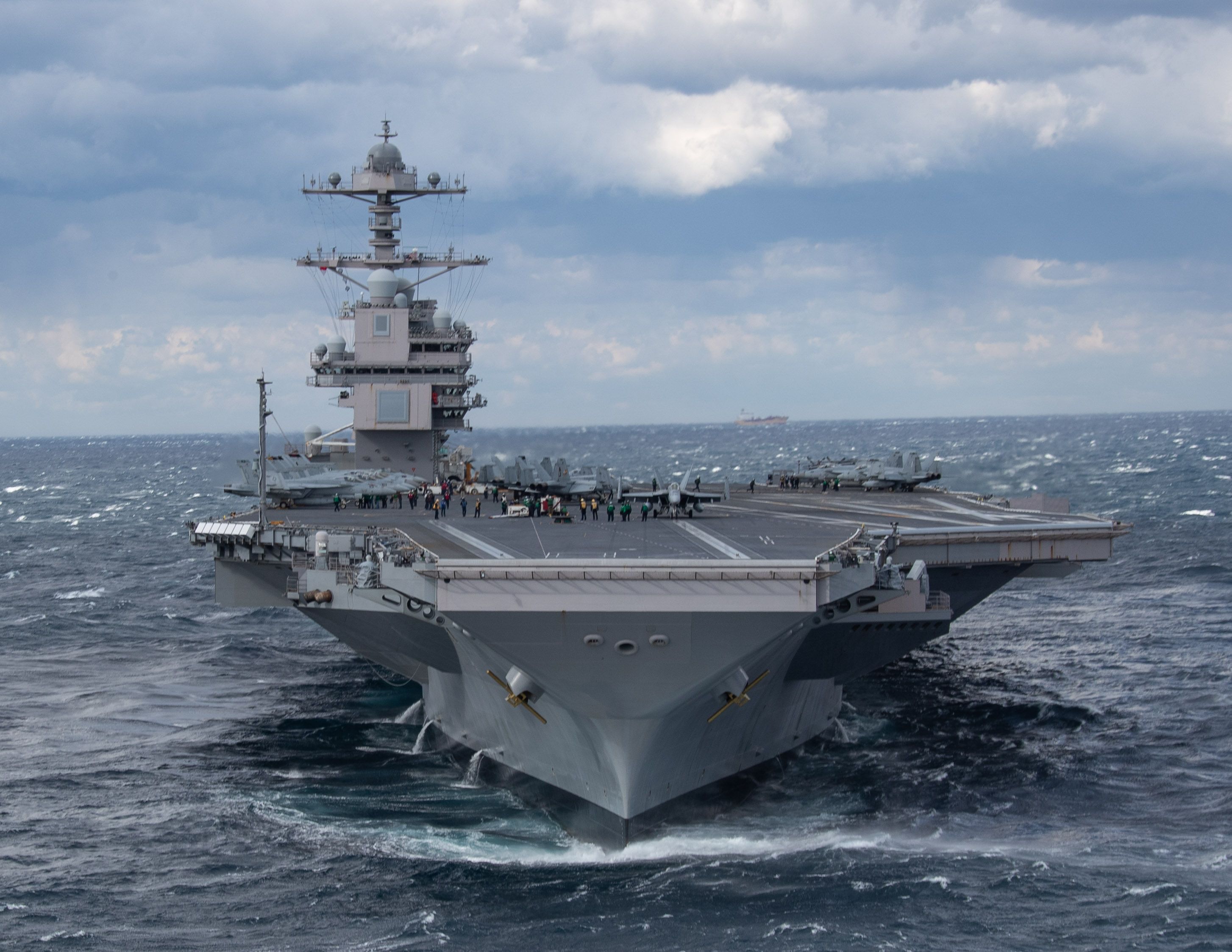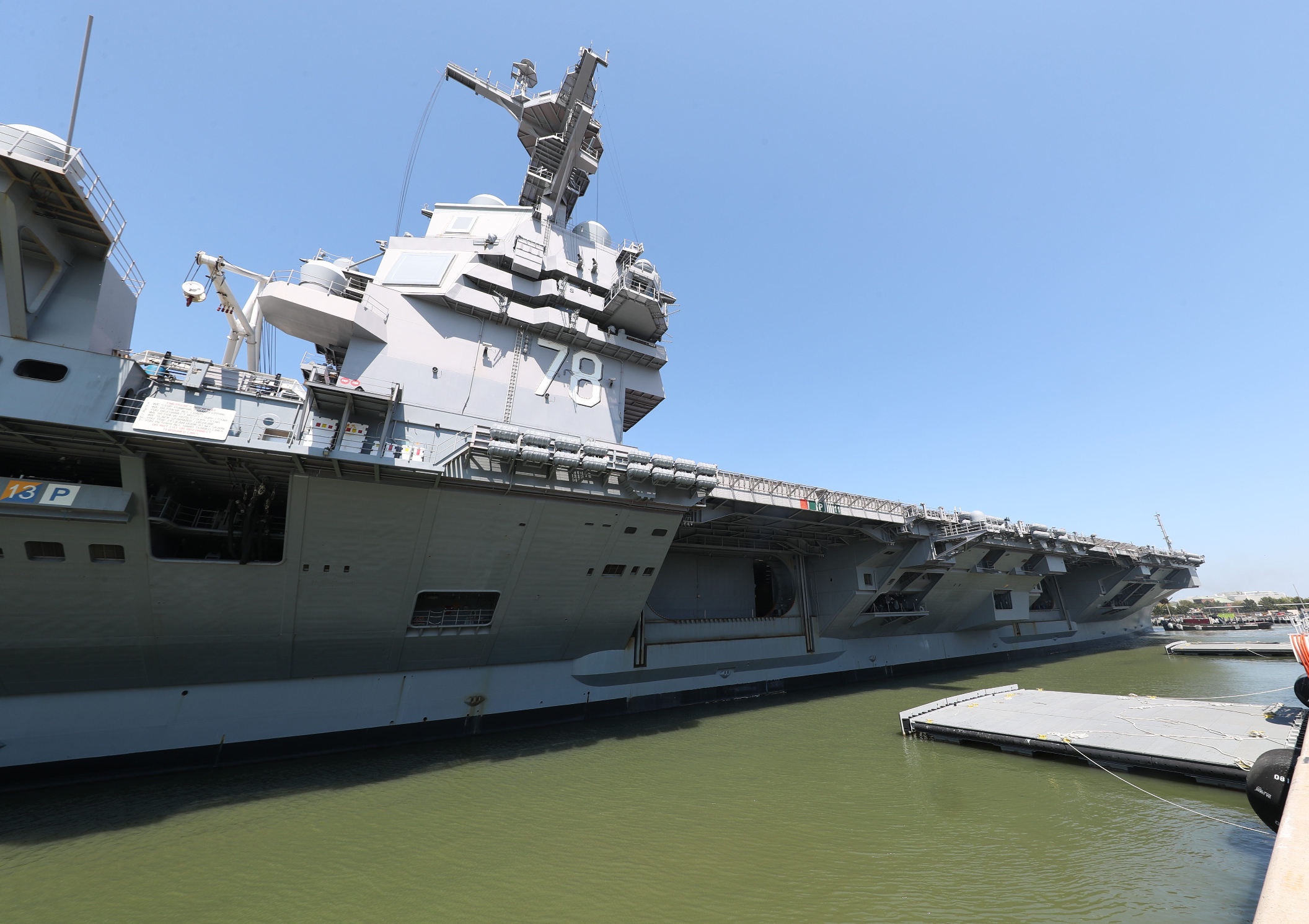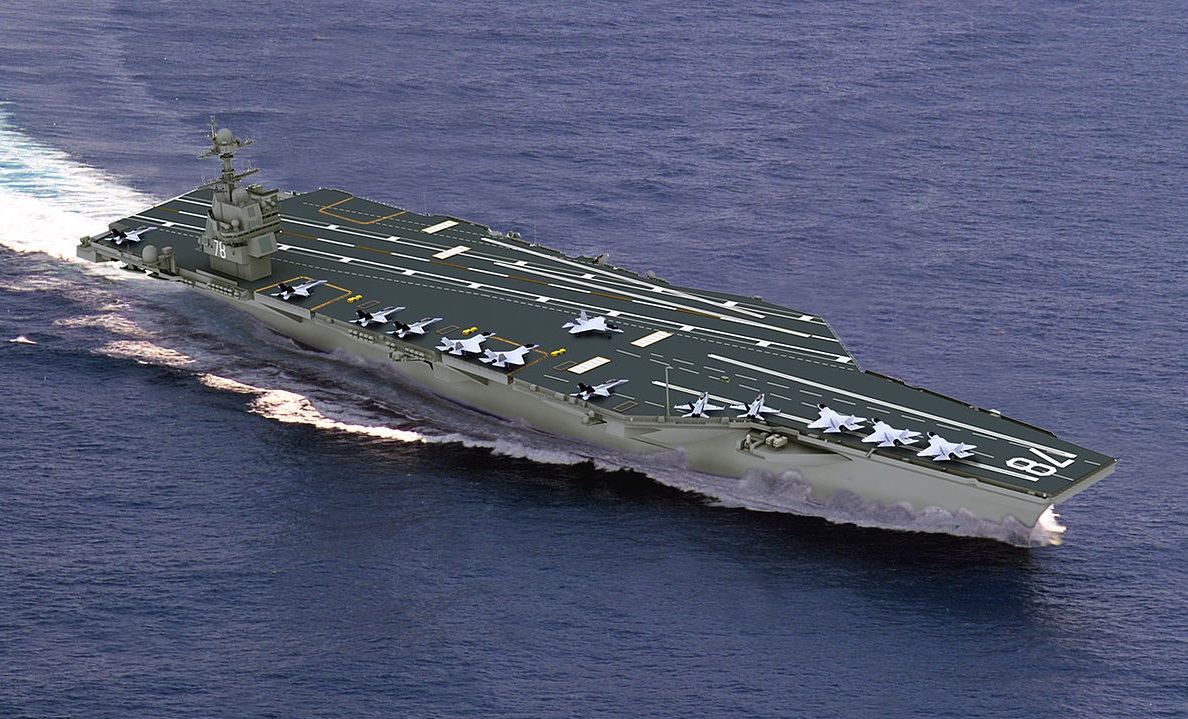Aircraft Carrier Elevator - There are also four giant elevators surrounding the hangar, which move the aircraft from the hangar to the flight deck. The high-speed, aluminum hydraulic elevators are big enough and powerful enough to lift two 74,000-pound (~34,000-kg) fighter jets.
They Can't. The first thing that you need to realize is that regardless of the size of the ship, the sea is bigger. Much bigger. If the sea throws the worst it has at you, you will sink.
Aircraft Carrier Elevator

The CVN 78 aircraft carrier was installed with four 30t bronze propellers in October 2013. Both the launch and first voyage of the ship took place in November 2013. Anchor testing on board the carrier was completed in June 2014, while the US Navy conducted EMALS testing
Do Aircraft Carriers Have Elevators?
on CVN 78 in May 2015. The CVN 78 returned to Newport News for post-delivery works in July 2018. A major part of every aircraft carrier, logically, is the aircraft onboard. Carriers transport dozens of different aircraft specially designed to withstand the constant abuse of catapult takeoffs and arresting-wire landings.
A carrier air wing typically consists of nine squadrons, with 70 to 80 total aircraft. The more notable onboard aircraft include: If successful, EMALS technology offers the potential benefit of finer aircraft acceleration control, which leads to lower stress levels in the aircraft and pilots, provides a slower launch speed for unmanned air vehicles and allows a wider window of wind-over-deck speed required for
the launch sequence. The hangar is three decks high, and it's flanked by various single-deck compartments on both sides. There are also four giant elevators surrounding the hangar, which move the aircraft from the hangar to the flight deck.
Aft of the hangar bay, in the stern of the ship, you'll find the Aircraft Intermediate Maintenance Division (AIMD) shops. The men and women in these shops are constantly repairing and testing aircraft equipment to keep the flight squadron at full strength.

Whats Onboard?
At the very end of the ship, the AIMD shops lead to an open-air engine testing area on the ship's fantail. This is the only place on the ship where the maintenance crews can safely blast aircraft jet engines to make sure they're working properly.
Aft of the hangar bay, in the stern of the ship, you'll find the Aircraft Intermediate Maintenance Division (AIMD) shops. The men and women in these shops are constantly repairing and testing aircraft equipment to keep the flight squadron at full strength.
The US Department of Defense awarded Northrop Grumman Newport News in Virginia a $107.6m contract in July 2003 and $1.39bn contract in May 2004. It also provided $559m to prepare for the carrier construction and continue the design program on the ship's propulsion system.
General Atomics and the US Navy completed successful turbo-prop arrests of C-2A Greyhound, E-2C+ Hawkeye, and E-2D Advanced Hawkeye aircraft using the advanced arresting gear (AAG) during performance testing in 2018. The AAG system also completed the
Are There Elevators On The Port Side Of A Ship?
first exploratory barricade arrest test with an E-2C+ Hawkeye aircraft in March 2019. All carriers with deck-edge elevators built before 1951 had their single deck-edge elevator amidships on the port side. This included the USN's Essex and Midway classes and the RN's Malta class, which were canceled with the end of WW2.
The Malta design had two deck-edge elevators... both on the port side. 85 feet long The elevator, which is used to move aircraft from the hangar bay to the flight deck, is located on the starboard side of the ship.
It measures 85 feet long and 52 feet wide and weighs 120 tons, about as much as a locomotive. The hangar is three decks high, and it is flanked by various single-deck compartments on both sides.
There are also four giant elevators surrounding the hangar, which move the aircraft from the hangar to the flight deck. The high-speed, aluminum hydraulic elevators are big enough and powerful enough to lift two 74,000-pound (~34,000-kg) fighter jets.
Uss Enterprise Cvn And Cvn
"A Nimitz class CVN (and the new Gerald R Ford) carrier can withstand severe damage, but its escorts (except the SSN Subs) would easily get wiped out if a CAT 3-5 storm was on the horizon.
The requirement for a higher sortie rate at 160 sorties a day with surges to a maximum of 220 sorties a day in times of crisis and intense air warfare activity led to design changes in the flight deck.
Construction of the USS John F Kennedy (CVN 79) began in February 2011 and its keel was laid in July 2015. The carrier will undergo outfitting and testing at Newport News shipyard's Pier 3 ahead of its scheduled delivery in 2022.
The other main differences in operational performance compared with the Nimitz-class are increased sortie rates at 160 sorties a day (compared with 140 a day), a weight and stability allowance over the 50-year operational service life of the ship and increased (by

Gerald R Ford Class Carrier Aircraft
approximately 150%) electrical power generation and distribution to sustain the ship's advanced technology systems. Another key performance requirement is interoperability. General Atomics was awarded the contract to develop the EMALS electromagnetic aircraft launch system, which uses a linear electromagnetic accelerator motor.
EMALS demonstrators were tested at the Naval Air Systems Command (NASC) Lakehurst test center in New Jersey. It is planned that EMALS will replace the current C-13 steam catapults. The Gerald R. Ford's 11 elevators move missiles and bombs from its weapon magazines up to the flight deck, so that they can be loaded onto the aircraft.
The lifts must be working before the ship can head out on a deployment scheduled for next year. HHI's Newport News was awarded a $152m contract in May 2016 for advance planning engineering, design and procurement of long-lead-time material for the third ship of the class, USS Enterprise (CVN 80).
A $25.5m modification contract was awarded for advance fabrication of the aircraft in February 2017. The requirement to build in a weight and stability allowance will accommodate the added weight of new systems that will be installed over the 50-year operational life of the ship.
Cvn Aircraft Carrier Hull
Removal of one aircraft elevator unit and reducing the number of hangar bays from three to two contributed to a weight reduction of the CVN 21. The carrier will now head to a shipyard in Virginia for six months of modernization, maintenance and post-trial repairs.
It is expected to come out of the yard in February 2022 and immediately begin workups for deployment that year, Baribeau said. The flight-deck crew can keep a small number of aircraft up top, but there's not nearly enough room for the 80 to 100 aircraft stationed on a typical carrier.
When they're not in use, most of the aircraft are secured in the hangar bay, the "carrier's garage." Weapons elevators take the weapons systems from the magazines to the weapons handling and assembly areas on the 02-level deck (below the flight deck) and express weapons elevators are installed between the handling and assembly areas and the flight deck.
The two companies selected by Northrop Grumman to create designs for the advanced weapons elevator are the Federal Equipment Company and Oldenburg Lakeshore. The island has a composite mast with planar array radars, a volume-search radar operating at S-band and a multifunction radar at X-band.
Why Are Us Carriers Flat?
It carries the stern-facing joint precision approach and landing system (JPALS), which is based on the local area differential global positioning system (GPS) rather than radar. Newport News was awarded a $407m contract extension for the preparation work on the CVN 79 ship in March 2013 and a $1.29bn extension in March 2014. It also received a $3.35bn contract for the ship's detailed design and construction in June 2015. The keel
for CVN 79 was laid in August 2015. The flight-deck crew can keep a small number of aircraft up top, but there's not nearly enough room for the 80 to 100 aircraft stationed on a typical carrier.
When they're not in use, most of the aircraft are secured in the hangar bay, the "carrier's garage." The hangar bay is located two decks below the flight deck, just below the galley deck. The carrier will be capable of carrying up to 90 aircraft, including the F-35 Joint Strike Fighter, F / A-18E / F Super Hornet, E-2D Advanced Hawkeye, EA-18G Growler electronic attack aircraft, MH-60R / S
helicopters, as well as unmanned air and combat vehicles. The manpower reduction was a key performance parameter added to the original four outlined in 2000 in the operational requirements document for the CVN 21 program. It is estimated that the new carrier technologies will lead to a 30% reduction in maintenance requirements and a further crew workload reduction will be achieved through higher levels of automation.

Aircraft Weapon Loading
The Gerald R. Ford's 11 elevators move missiles and bombs from its weapon magazines up to the flight deck, so that they can be loaded onto the aircraft. The lifts must be working before the ship can head out on a deployment scheduled for next year.
Since the 1960s, all US Navy aircraft carriers have been built at Northrop Grumman Newport News. Northrop extended its design and shipbuilding facilities with a new heavy-plate workshop and burners, a new 5,000t thick plate press, covered assembly facilities and a new 1,050t-capacity crane.
What explains the disparity? American aircraft carriers use something called a catapult to launch their jets. What this means is the jet's front wheel is attached to a steam powered track that launches the jet at high speed to the tip of the carrier and the plane has enough speed to achieve lift-off.
The aircraft carrier traditionally carries the flag officer and 70 staff of the carrier battle group. The flag bridge, which was previously accommodated in the carrier's island, was relocated to a lower deck to reduce the size of the island.
Weapons Of Gerald R Ford Class
The flight deck has a relocated smaller island, while there are three rather than four deck-edge elevators. Deck extensions also increase the aircraft parking areas. Aircraft service stations are located near the 18 refueling and rearming stops.
The second carrier, USS John F Kennedy (CVN 79), was christened and launched in December 2019. The vessel is scheduled to be commissioned in 2020, while further ships of the class will enter service at five-year intervals.
A total of ten Ford-class carriers are planned with construction continuing to 2058.
aircraft carrier elevator design, aircraft carrier elevator design requirements, aircraft carrier elevator size, uss gerald ford elevators, aircraft carrier weapons elevator, aircraft elevator design, aircraft elevators on ford aircraft carrier, aircraft carrier plane storage
